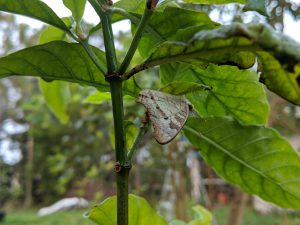Butterfly hanging from a p. Viridis plant

Butterfly hanging from a p. Viridis plant
Buy Psychotria viridis Fresh Leaf
Psychotria viridis is hardy in USDA zone 10 or higher.[5][unreliable source?]
Cultivation from cuttings is easiest.[6] A single leaf (or even part of a leaf slightly covered with soil) can be sufficient for a cutting.[6] Propagation from seed is extremely difficult. The germination rate can be as low as 1%.[6] There are approximately 50 seeds/g.
Indoor hydroponic cultivation of Psychotria viridisrequires a light cycle. The plant will not utilize its root system as often in daylight hours. Optimal water garden pH is 5.5 to 6.10′. Parts per million (PPM) levels of nutrient solution should be around 300 to 500 PPM. Nutrient solution burning can occur at levels as low as 800 PPM.
Buy Psychotria viridis Fresh Leaf
Dried P. viridis contains approximately 0.3% dimethyltryptamine (DMT).[4] Other alkaloids such as beta-carbolines and N-methyltryptamine (NMT) have been found. The alkaloid content is said to be highest in the morning.[6]
Buy Psychotria viridis Fresh Leaf
P. viridis contains the hallucinogenic—or entheogenic—indole alkaloid dimethyltryptamine (DMT) in levels varying from 0.1% to 0.61% dried mass.[7][unreliable source?] It is known primarily as an additive to the ayahuasca brew used in South and Central America. The mechanism of action is via the monoamine oxidase inhibitor (MAOI) present in Banisteriopsis caapi, which allows ayahuasca to be effective in oral doses (unlike smoking DMT crystals which requires no conditioning partner substance). This use is legal in Brazil among native tribes and followers of some syncretic religions.
Vegetalistas, healers in the Amazon regions of Peru, Ecuador, and Colombia, recognize different sub-varieties of Psychotria viridis, based on the location of glands on the back of the leaves.
